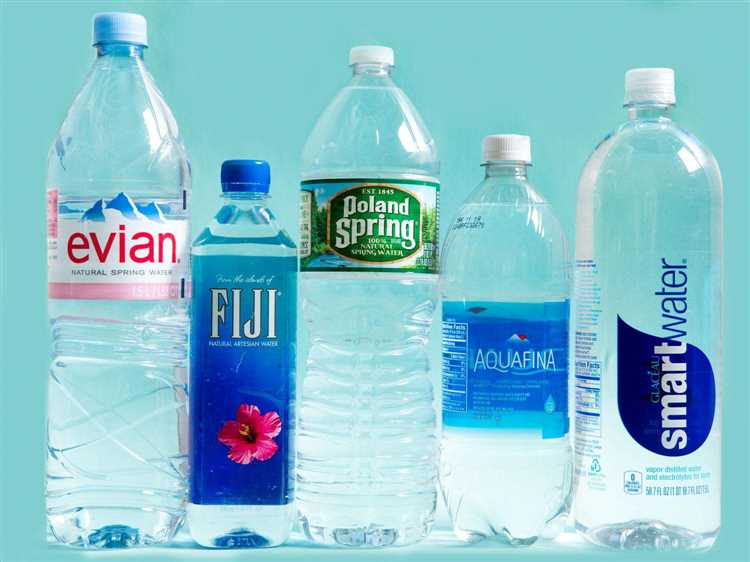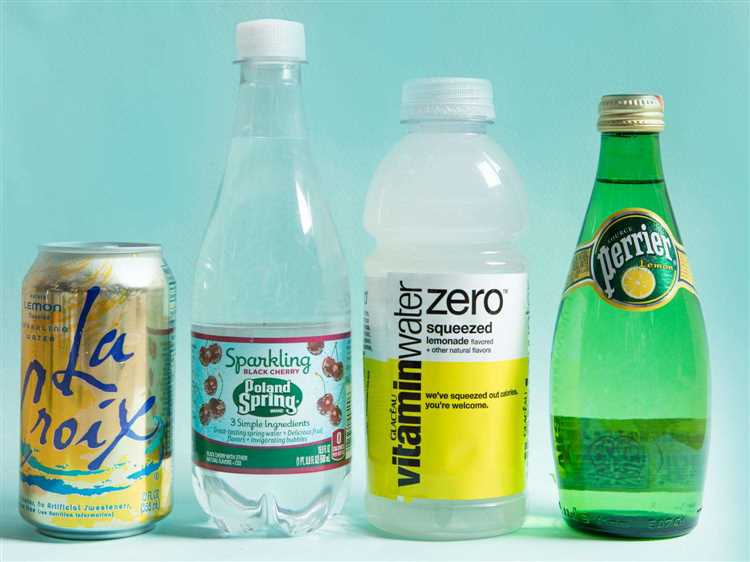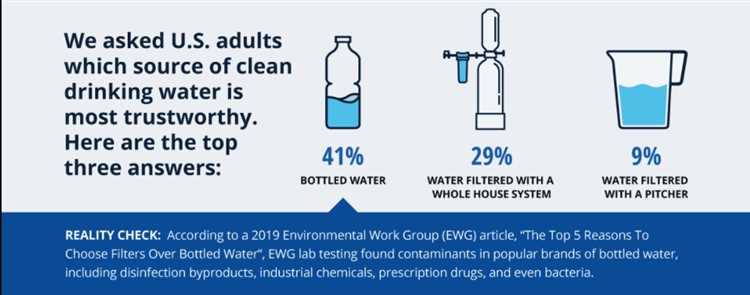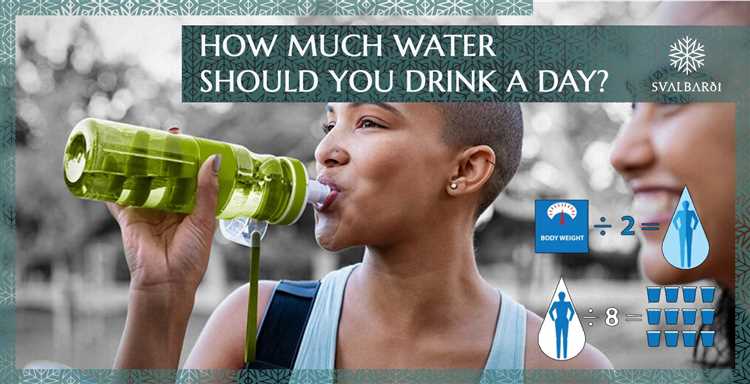
In today’s fast-paced world, staying hydrated is more important than ever. With busy schedules and constant demands, it can be challenging to find time to sit down and enjoy a glass of water. As a result, many people turn to convenient options like water bottles to quench their thirst on the go.
However, have you ever wondered just how many water bottles Americans consume every hour? The answer might surprise you. A recent study conducted in the United States has revealed the staggering hourly rate of water bottle consumption in the country.
According to the study, Americans consume an average of X water bottles per hour. This equates to Y water bottles per day and Z water bottles per year. These numbers highlight the significant role that water bottles play in the daily lives of Americans, serving as a primary source of hydration.
Furthermore, the study also delved into the different factors influencing water bottle consumption. It found that convenience, accessibility, and health concerns were the main driving forces behind the high hourly rate. With the rise of eco-friendly and reusable water bottles, many individuals are now opting for sustainable options to reduce plastic waste.
In conclusion, water bottle consumption in the United States is at an all-time high, with Americans drinking a remarkable number of water bottles every hour. This trend reflects the fast-paced lifestyle and increased demand for convenient hydration options. As the focus on sustainability grows, it will be interesting to see how these numbers evolve in the future.
- Trends in Water Bottle Consumption
- Factors Affecting Water Bottle Consumption
- 1. Convenience and Access
- 2. Health and Hydration Awareness
- 3. Environmental Concerns
- Environmental Impacts of Water Bottle Consumption
- The Battle Against Single-Use Plastic Bottles
- The rise of reusable water bottles
- The role of government and legislation
- Alternatives to Single-Use Plastic Bottles
- Reusable Water Bottles
- Filtered Water Pitchers
- Future Outlook for Water Bottle Consumption
- Q&A:
- How much water do Americans consume from water bottles per hour?
- What is the average daily water bottle consumption in the United States?
- Why is there such a high consumption of water bottles in the United States?
- Is the consumption of water bottles increasing or decreasing in the United States?
Trends in Water Bottle Consumption
As the demand for convenient and portable hydration options increases, the consumption of water bottles in the United States has witnessed significant growth over the years. This trend can be attributed to various factors, including changes in lifestyle preferences and a growing awareness of the importance of staying hydrated.
One of the notable trends in water bottle consumption is the shift towards reusable water bottles. With an increasing emphasis on sustainability and reducing plastic waste, more individuals are opting for reusable bottles made from materials such as glass, stainless steel, and BPA-free plastics. This trend aligns with the rising popularity of eco-friendly practices and sustainable living.
Another trend in water bottle consumption is the diversification of bottle designs and features. Manufacturers are introducing innovative designs, including collapsible bottles, insulated bottles, and ones with built-in filters. These features cater to the needs and preferences of various individuals, such as outdoor enthusiasts, fitness enthusiasts, and those concerned about water quality.
Furthermore, the growing influence of social media and the wellness industry has also contributed to the trends in water bottle consumption. Celebrities, influencers, and health-conscious individuals often showcase their stylish water bottles on platforms like Instagram, creating a trend of using aesthetically pleasing bottles as a fashion statement.
Additionally, the COVID-19 pandemic has had an impact on water bottle consumption trends. The increased focus on personal hygiene and cleanliness has led to a surge in the use of individual water bottles, as people aim to avoid public water fountains and shared drinking sources.
In conclusion, the trends in water bottle consumption in the United States reflect the changing preferences and values of individuals. The shift towards reusable bottles, innovative designs, and the influence of social media and the wellness industry all play a significant role in shaping the choices and behaviors of consumers.
Factors Affecting Water Bottle Consumption
There are several factors that can influence water bottle consumption in the United States. These factors include:
1. Convenience and Access

The availability and ease of access to water bottles play a significant role in consumption rates. When water bottles are readily available and convenient to purchase or refill, people are more likely to consume them regularly. This convenience factor is particularly important during outdoor activities, travel, and in workplaces or educational institutions.
2. Health and Hydration Awareness
Increased awareness of the importance of hydration and the health benefits of drinking water can also affect water bottle consumption. Individuals who are conscious of their overall health and well-being are more likely to choose water as their preferred beverage and therefore consume more water bottles.
3. Environmental Concerns

Environmental awareness and concerns about plastic waste can also impact water bottle consumption. Many individuals choose to use reusable water bottles as an eco-friendly alternative to single-use plastic bottles. This behavior not only reduces plastic waste but also encourages the use of refillable water bottles instead.
Overall, the convenience of access, health and hydration awareness, and environmental concerns are key factors influencing water bottle consumption in the United States.
Environmental Impacts of Water Bottle Consumption
Water bottle consumption in the United States has significant environmental impacts, contributing to pollution, resource depletion, and greenhouse gas emissions.
One of the main environmental concerns associated with water bottle consumption is plastic pollution. The majority of water bottles are made from petroleum-based plastics, such as polyethylene terephthalate (PET). These plastics take hundreds of years to decompose, leading to the accumulation of plastic waste in landfills, oceans, and other natural habitats. This pollution poses a threat to wildlife, as animals can ingest or become entangled in plastic debris.
In addition to plastic pollution, the production and disposal of water bottles also contribute to resource depletion. The manufacturing process requires significant amounts of water and energy, further straining already scarce resources. Furthermore, the extraction of fossil fuels for plastic production contributes to air and water pollution, as well as the release of greenhouse gases.
Another environmental impact of water bottle consumption is the carbon footprint associated with transportation. Water bottles are often transported long distances, leading to increased fuel consumption and emissions from trucks and ships. These emissions contribute to climate change and air pollution, further exacerbating environmental issues.
| Environmental Impact | Description |
|---|---|
| Plastic pollution | Long decomposition time, accumulation in landfills and oceans, threat to wildlife |
| Resource depletion | Water and energy usage in production, extraction of fossil fuels |
| Carbon footprint | Emissions from transportation, contributing to climate change and air pollution |
The Battle Against Single-Use Plastic Bottles
In recent years, there has been a growing concern over the environmental impact of single-use plastic bottles. These bottles, typically used for water consumption on the go, contribute to pollution and take centuries to decompose. As a result, there has been a push to reduce the use of these bottles and find more sustainable alternatives.
One of the main challenges in the battle against single-use plastic bottles is changing consumer behavior. Many people have become accustomed to the convenience of purchasing bottled water wherever they go, often without considering the consequences. However, there has been a shift in public awareness, with more people recognizing the importance of reducing plastic waste.
The rise of reusable water bottles
One of the most effective ways to combat the use of single-use plastic bottles is by promoting the use of reusable water bottles. These bottles are made from durable materials such as stainless steel or glass, and can be refilled countless times. They not only help reduce plastic waste, but also save money in the long run.
Some companies and organizations have taken the initiative to provide reusable water bottles to their employees or customers. This encourages people to make the switch and helps create a culture of sustainability. Additionally, many cities and public spaces are installing water refill stations to make it easier for people to refill their bottles on the go.
The role of government and legislation
Government intervention and legislation play a vital role in the battle against single-use plastic bottles. Some countries have implemented bans or taxes on single-use plastic bottles to discourage their use. Others have introduced bottle deposit schemes, where a deposit is paid on each bottle and refunded when it is returned for recycling.
These measures help incentivize consumers to choose more sustainable options and hold manufacturers accountable for their packaging choices. They also create a demand for alternative packaging solutions, such as biodegradable or compostable materials.
Conclusion:
The battle against single-use plastic bottles is gaining momentum as more people and organizations recognize the need for change. By promoting reusable water bottles and implementing government measures, we can work towards a future with less plastic waste and a healthier environment for all.
Alternatives to Single-Use Plastic Bottles

With the increasing awareness of environmental issues and the harmful effects of single-use plastic bottles, many people are looking for alternatives that are more eco-friendly and sustainable. Fortunately, there are several options available that can help reduce plastic waste and promote a greener lifestyle:
Reusable Water Bottles
One of the most effective alternatives to single-use plastic bottles is a reusable water bottle. These bottles are typically made from materials such as stainless steel, glass, or BPA-free plastic, which are durable and safe for multiple uses. By using a reusable water bottle, you can significantly reduce the amount of plastic waste generated from single-use bottles.
Filtered Water Pitchers
Filtered water pitchers are another great alternative to plastic bottles. These pitchers have built-in filters that help remove impurities from tap water, providing you with clean and refreshing drinking water. By using a filtered water pitcher, you can avoid the need to buy bottled water altogether, reducing both plastic waste and costs.
| Alternative | Benefits |
|---|---|
| Stainless Steel Water Bottles | Durable, reusable, and BPA-free |
| Glass Water Bottles | Safe, easy to clean, and recyclable |
| BPA-Free Plastic Water Bottles | Durable and lightweight |
Additionally, there are alternatives such as collapsible water bottles, which are perfect for traveling or on-the-go use, as they can be folded or rolled up when empty. These bottles save space and can easily fit into a bag or pocket.
Another option is to use water coolers or dispensers. These devices allow you to have a large supply of filtered water readily available in your home or office, eliminating the need for individual plastic bottles. Water coolers often come with reusable water jugs that can be refilled as needed.
Lastly, individuals can also opt for drinking tap water directly, as long as it is safe and free from contaminants. This approach eliminates the need for any type of water bottle altogether and is the most cost-effective and environmentally friendly option.
Future Outlook for Water Bottle Consumption

The future outlook for water bottle consumption in the United States looks promising. With growing concerns about the environment and the need to reduce single-use plastic waste, more and more people are turning to reusable water bottles.
As awareness about the harmful effects of plastic pollution increases, consumers are seeking alternative options to single-use plastic bottles. Reusable water bottles made from materials such as stainless steel, glass, or BPA-free plastic are becoming increasingly popular.
Several factors contribute to the positive outlook for water bottle consumption. Firstly, the convenience of carrying a reusable water bottle and being able to refill it throughout the day is appealing to many. It not only saves money but also reduces plastic waste.
In addition, various initiatives are being implemented to encourage the use of reusable water bottles. Some organizations and businesses provide refill stations or fountains where people can easily refill their bottles. This promotes a culture of sustainability and encourages individuals to make eco-friendly choices.
Furthermore, the rise of e-commerce has made it easier for consumers to access a wide range of reusable water bottle options. Online stores offer a variety of styles, sizes, and designs, catering to different preferences and needs.
The future outlook for water bottle consumption will likely see an increase in the adoption of reusable bottles. As more individuals become aware of the environmental impact of single-use plastic bottles, they are likely to make the switch to more sustainable alternatives.
The government and various environmental organizations can play a significant role in further promoting the use of reusable water bottles. By implementing policies and campaigns that raise awareness and provide incentives for using reusable bottles, they can encourage more widespread adoption.
Overall, the future of water bottle consumption in the United States looks promising, with a growing emphasis on sustainability and eco-friendly choices. The shift towards reusable water bottles is an encouraging step towards reducing plastic waste and preserving our environment for future generations.
Q&A:
How much water do Americans consume from water bottles per hour?
According to the article, Americans consume approximately 1.5 million water bottles per hour.
What is the average daily water bottle consumption in the United States?
The article states that the average daily water bottle consumption in the United States is around 36 million.
Why is there such a high consumption of water bottles in the United States?
The article doesn’t provide a specific reason for the high consumption of water bottles in the United States, but it could be attributed to convenience, accessibility, and the perception that bottled water is safer and cleaner than tap water.
Is the consumption of water bottles increasing or decreasing in the United States?
The article does not mention if the consumption of water bottles is increasing or decreasing in the United States.